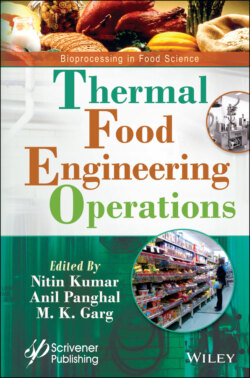Читать книгу Thermal Food Engineering Operations - NITIN KUMAR - Страница 51
2.6.3.2 Application for Inactivation in Food Sector
ОглавлениеAuthentication of microbial content using radiofrequency heating was done for wheat by [71]. The log reduction microorganisms Enterococcus faecium and Salmonella enteritidis were investigated. It was calculated that it took 18 min for Salmonella enteritidis and 25mins for Enterococcus faecium to reach 5 log reduction at 85°C. Similarly, [72] studied the effect of radiofrequency heating the same pepper to decontaminate Salmonella typhimurium by adjusting the aw to 0.57-0.71. The outcome was a reduction of the log cycle between 2-3. Another study was carried by [73] utilizing radiofrequency for the 80s at 90 °C for dried black pepper and the outcome was a remarkable reduction 7 log cycle of S. Typhimurium and E. coli. When this log reduction is compared with infrared and microwave, it was the best and highest, but got a little demerit as the moisture content was reduced drastically. Similarly, [74] used broccoli for their experimental research to treat it at 6 kW which showed a reduction by 4.2 and maintaining the quality attributes and preserve the color from degradation. Therefore, mesophilic bacteria work best in radiofrequency heating by attaining the desired log reduction and also maintaining and preserving the quality, sensory and nutritional aspects of the food product for decontamination of the microbes.
